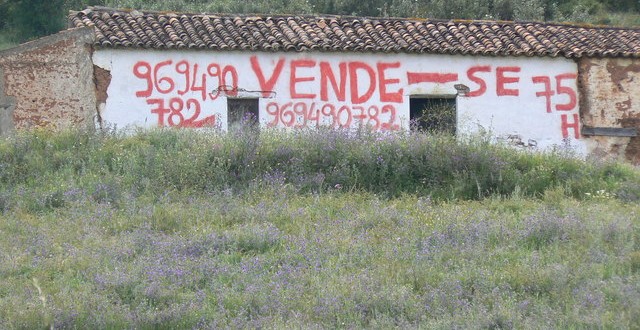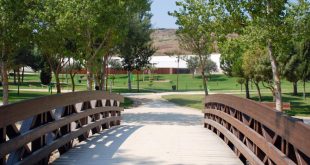Desertification and depopulation have been emphasized through all of the country´s interior during the last decades: a scenario that has been getting worse with the times. ECO123 spoke with Alberto Espírito Santo Fernandes. He is a member of the National Fight against Desertification Comission (CNCD) since 2004 and is responsible for the Regional Center against Desertification in the Algarve. The 61 year-old engineer relies on a broad experience in this area after, around 40 years ago, more precisely in 1976, having been the first technician placed in what was the first Natural Reservation created in continental Portugal – the Reserva Natural do Sapal de Castro Marim. Engineer Alberto Espirito Santo Fernandes, superior technician at the Institute of Nature and Forest Conservation (ICNF), responsible for fighting desertification and natural resources management, in this interview, shows his vision on the depopulation issue and presents some measures that can invert this scenario. This is a subject which involves three sections: the desertification, defined as the physical degradation and the loss of soil and its productive ability; the depopulation, which is the declining of the number of residents in determined area; and the sustainability in the relation between active population and residents over 65 years old. For the engineer one of the causes of depopulation goes through the successive use of bad techniques on the soil, mainly with the goal of growing food for the local residents, which has led to the soil´s loss of productive ability. A scenario which he still considers possible to invert and shows which path to follow.
It is necessary to create measures and conditions to establish the population, as well as the intervention at the level of soils in the Algarve territory
ECO 123: What is the current scenario in terms of desertification and depopulation in the country and the Algarve?
The Algarve is an area that has registered a brutal worsening on three issues: the desertification and the depopulation which will interfere with the sustainability in terms of residents. For example, in Alcoutim for every resident with a active age there is a over 65 year-old resident, it´s a one-on-one quota. And on a national level the same goes on in the boroughs of Penamacor, Vila Velha de Ródão and Idanha Nova, areas which also show the same indications.
But the numbers from the National Statistic Institute (INE) show a raise in the Algarve population.

The Algarve population has raised in the last years but the data is referring to the coast because the interior situation is very serious. From 2001 to 2011 Alcoutim lost 24,08 % of it’s residents, this is the borough in which the situation became more dramatic over a short period of time. Albufeira has grown in the last ten years, from thirty thousand to forty thousand residents, but even in this borough there are imbalances, in areas like Loulé or in Tavira, because if we look into the inner Algarve towns in these areas, there is a remarkable population decline.
Does this mean that there are boroughs in which the population growth does not match the reality of the situation?
The depopulation in the Algarve has been worsening with great imbalances. If they are scrutinized by parishes that is a surprise in itself. The number of residents near the coast continues to grow, the same in towns and villages where residential areas are built for people to live in, like in São Brás ou Moncarapacho, where the population is not active, in fact, when they do go there, it’s to be passive and sleep.
Which issues are behind this phenomenon and what can be done to remedy this scenario?
Have you imagined a couple with children, or that has plans to do so soon, to go live in Alcoutim for example. Where’s the school, where’s the Health Centre, the Tax Office, the Social Security and other services? Conditions are needed again to secure the population. At this moment, the drastic decrease of the number of residents has led to a concentration of services that will hardly be useful for the eastern Algarve residents. The problem is that there is less and less motives of attraction, the biggest effect witnessed to fight depopulation in these small areas is attracting the people that have retired, that have made their active lives elsewhere and now plan to return.
How is it happening in São Brás de Alportel?
The São Brás borough is famous for the fact that when the cork industry started to decline many of its residents moved to Montijo and Seixal and it’s funny that many of those people are now returning, reactivating their farms and returning to the land while others start companies.
What measures is the CNCD applying to fight depopulation?
 The National Plan of Action (CNCD) was approved at the end of last year, it is a very broad plan and it covers various themes, it isn’t just securing people, the neo-rural and the retired, but also to create conditions so their children won’t leave. The role of the National Commission and Regional Centres goes from studying and presenting proposals for the adoption of certain measures and, through these, coax the country’s leaders to determine the laws, the measures of the effects which we intend to obtain and if we want to create conditions to do so. From this year onwards the measures that will be put into practice in the Rural Development Plan (PRODER) already include adapted measures to the current circumstances and necessities. Our main role is to sensitize governmental leaders towards this goal.
The National Plan of Action (CNCD) was approved at the end of last year, it is a very broad plan and it covers various themes, it isn’t just securing people, the neo-rural and the retired, but also to create conditions so their children won’t leave. The role of the National Commission and Regional Centres goes from studying and presenting proposals for the adoption of certain measures and, through these, coax the country’s leaders to determine the laws, the measures of the effects which we intend to obtain and if we want to create conditions to do so. From this year onwards the measures that will be put into practice in the Rural Development Plan (PRODER) already include adapted measures to the current circumstances and necessities. Our main role is to sensitize governmental leaders towards this goal.
And which are the main measures to be put into practice?
From support programs, incentives or even the construction of a Reference Centre in the Algarve which is fundamental in our opinion. A location which works as a forum for clarification and demonstrations, where the population can directly observe what can be done on specified soil. So that the land can produce more and be more resistant to erosion. We can see species that may have economic value and resist the draught and even how to restore the soil’s conditions.
Does soil condition interfere with depopulation?
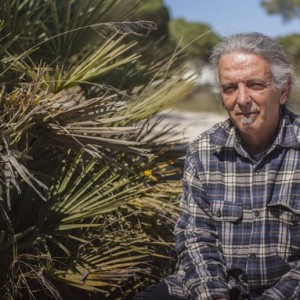 The problem is that when people leave the area, they also abandon the land. The majority of the Algarve territory is made of dry land, which is the shale area, the Monchique area is made of syenite, regardless of some people calling it granite. Monchique has more moisture in its soil, it has a different quality to it thanks to the continuous densely forested area with good conditions for afforestation. In terms of dry land Algarve has mostly a dry and semi-arid climate which is growing in territory. only 1,81 % of the Algarve territory has a humid and semi-moist climate, 22,58% has had a growth in aridity and has now settled on a sub humid dry and 75% is already semi-arid.
The problem is that when people leave the area, they also abandon the land. The majority of the Algarve territory is made of dry land, which is the shale area, the Monchique area is made of syenite, regardless of some people calling it granite. Monchique has more moisture in its soil, it has a different quality to it thanks to the continuous densely forested area with good conditions for afforestation. In terms of dry land Algarve has mostly a dry and semi-arid climate which is growing in territory. only 1,81 % of the Algarve territory has a humid and semi-moist climate, 22,58% has had a growth in aridity and has now settled on a sub humid dry and 75% is already semi-arid.
Has the people’s abandonment of the interior interfered with the soil’s degradation?
I would say it was the other way around, the soil’s degradation has also led to the people’s abandonment. For example in Alcoutim, during the century XVI and XVIII, the lack of bread lead people to burn bushes in order to plant wheat, rye and oats for the animals, and the cereal culture in terrains that weren’t appropriate for it was followed with brutal erosion levels and the soil was lost. At this time on the serra (mountain range) we find rock at the surface, which is shale and we have a perfectly ridiculous soil height which will further accentuate the soil erosion with the continuous tillage.
What can be done to avoid this scenario?
People usually cut away the bush and grate the remains away. Why grate it away? There’s no point. Go through it with the cutters, shred everything you can and leave it on top of the soil, this way the remains will assume the role of leaves and branches that fall in the more forested areas, which will gently transform into compost and incorporate with the soil.
Is this one way to avoid the erosion that has been damaging the soils?
The system of cutting and taking away or burying the remains with grates has a terrible effect, it doesn’t produce what’s necessary and we’re moving the soil. At the moment we’re facing a grave problem which isn’t not degrading the soil anymore but to regenerate it. It’s important to minimalize the movement of the soil as well cutting and clearing of bush areas with bush cutters instead of grates, or any device that causes any burying or eradication of those plants. Apart from that we also need to have care when using water.
In what way?
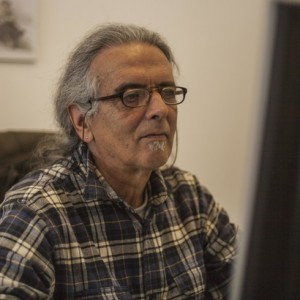 If we have water lines or sources on our property and knowing that rain in the Algarve region can be torrential, we have to proceed to the so called torrential correction. For example protecting the water line with a few simple stone dykes or bunds, just to slow the excessive water speed which leads to erosion. As well as how we use water, how we store it, preserve and utilize it, which kinds of sprinklers we make. For the soil’s preservation and regeneration it is essential to have into account the very careful and specific use of soil and water.
If we have water lines or sources on our property and knowing that rain in the Algarve region can be torrential, we have to proceed to the so called torrential correction. For example protecting the water line with a few simple stone dykes or bunds, just to slow the excessive water speed which leads to erosion. As well as how we use water, how we store it, preserve and utilize it, which kinds of sprinklers we make. For the soil’s preservation and regeneration it is essential to have into account the very careful and specific use of soil and water.
Does forestation or reforestation interfere with the soil?
Regardless of the attempt of investing more in cork and azinheiro, people still choose to install forest stands out of, for example, stone pine which is happening on a big scale. Stone pine produces some pine but it doesn’t promote either carbon sequestration nor land protection and it doesn’t have any defence against forest fires or regeneration ability.
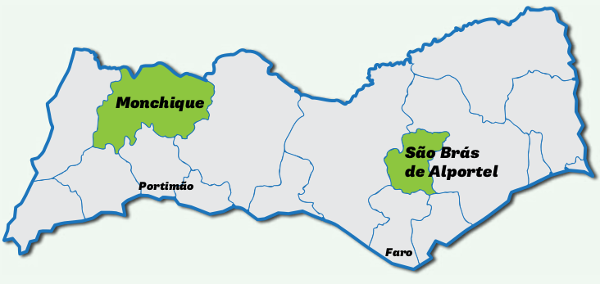
MONCHIQUE AND SÃO BRÁS – 2 PARADOX REALITIES
Monchique and São Brás Alportel have registered in the last years reversed demographic numbers in terms of residents per county which, however, doesn’t reflect in terms of soil use. In the last 40 years the National Institute of Statistics (INE) data points to a population decrease to half in Monchique, from 12 thousand residents to 6 thousand, inversely during the same time São Brás raised its population from 7.415 to 10.622 residents. “The difference is that São Brás is next to Faro, the region centre which works as the capital for the Algarve and has been attracting population for the conditions it offers but it’s more of a dorm than anything else”, affirms Alberto Espírito Santo Fernandes, at the same time he adds that in Monchique “regardless of the population decrease that has been happening in the Marmelete and Alferce parishes at an alarming rate, Monchique nonetheless has maintained some dynamic and furthermore, registers a bigger soil intervention than São Brás”. For this engineer the two boroughs are a sort of exception in the Algarve. “Mainly Monchique, for its geologic structure, activity and cultural style but however it hasn’t dedicated itself to attract people from Portimão and thence the current scenario. Regardless of being far from the coast they’re the two inner boroughs that are handling themselves best. Monchique in its economic production plan, São Brás though, it’s a mix, it has very high grade cork but I’m not sure if the authorities have the deserved attention on the matter. Regardless of the efforts of the Rota da Cortiça, on the first documents revised by the PDM (Plano Diretor Municipal), submitted as ‘great smothering to the existence of azinhais e sobreirais’, it might have been a sentence with some other goal”.
 Eco123 Revista da Economia e Ecologia
Eco123 Revista da Economia e Ecologia

